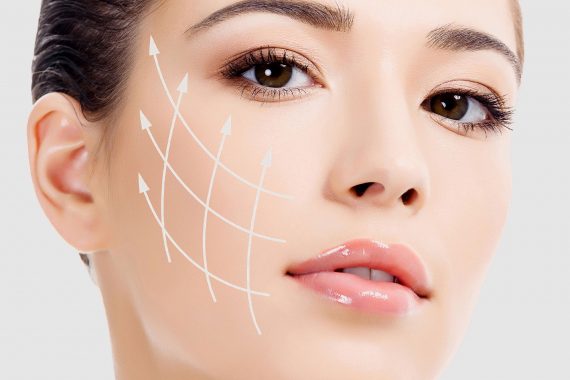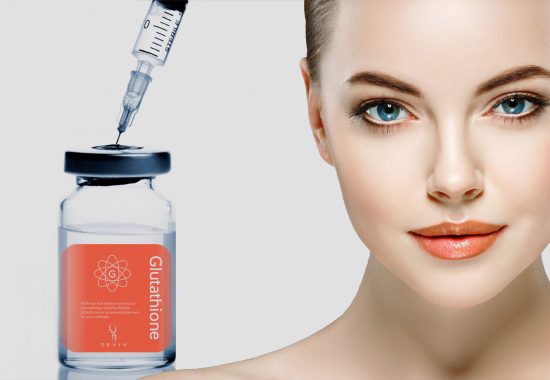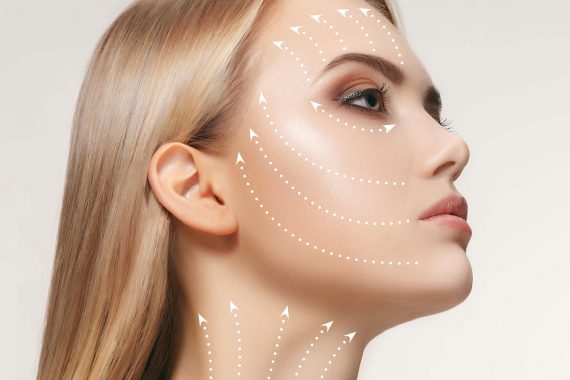Cheek Filler

Cheek Fillers: Definition, Providers, Goals, and Popularity
Cheek fillers are a type of dermal filler that involves injecting a substance into the cheeks to enhance their volume and contour. The most common substance is hyaluronic acid. It naturally exists in the body, which attracts and binds to water molecules to provide volume and hydration. In addition, healthcare professionals take cheek filler before and after photos to compare later. Moreover, other substances that can be used include calcium hydroxylapatite, poly-L-lactic acid, and polycaprolactone.
It is an aesthetic treatment and is typically performed by licensed healthcare professionals, such as dermatologists or plastic surgeons. They have received specific training in administering dermal fillers. The provider will inject the filler into the cheeks using a fine needle or cannula, which can help to minimize discomfort and bruising.
The goals of cheek filler treatment vary depending on the individual’s needs and preferences. Some people seek to address age-related volume loss in their cheeks, while others may want to enhance their facial features for aesthetic purposes. Cheek fillers can also help to improve facial symmetry by balancing out any asymmetries in the cheek area.
According to the American Society of Plastic Surgeons, over 90,000 people received cheek augmentation with fillers in 2020. This is likely due to the relatively low risk and minimal downtime associated with the treatment. In addition, it is effective in achieving natural-looking results.
Cheek fillers are a popular cosmetic treatment because they can help to enhance the volume and contour of the cheeks. Moreover, they restore a more youthful appearance, and improve facial symmetry. It is important to consult with a qualified provider to determine which type of filler is best for you. You can get demos of cheek filler before and after appearance.

Who Are Good Candidates To Experience The Difference Between Cheek Filler Before And After?
Here are some features of a good candidate for cheek filler procedure:
Good overall health
A good candidate for cheek filler should be in good overall health, with no underlying medical conditions. These medical issues could increase the risk of complications during or after the procedure.
Age
The patients are typically over the age of 18, but there is no upper age limit. The procedure is ideal for those having noticed a volume loss in their cheeks due to aging or other factors.
Realistic Expectations
Firstly, patients should have realistic expectations about the appearance, what the procedure can and cannot accomplish. They should understand that cheek filler can make the appearance of the cheeks more beautiful. Nevertheless, it cannot completely reverse the effects of aging or address other underlying issues.
Good Skin Quality
Having a good skin quality, with minimal scarring or sun damage, is important. It can help to smooth out fine lines and wrinkles. Yet, it is not a substitute for a good skincare routine.
No Allergies or Sensitivities
In addition, patients should not have any allergies or sensitivities to the substances used in the procedure, typically hyaluronic acid. They need to disclose any allergies or sensitivities to their provider. Otherwise, they can not get the difference of cheek filler before and after.
Non-smoker
Candidates for cheek filler injections should ideally be non-smokers. Smoking can interfere with the healing process and increase the risk of complications. If you are smoking, you should stop smoking at least 15 days before your cheek filler treatment. Furthermore, you should not smoke for 15 days after.
In conclusion, these injections can be a safe and effective way to improve your cheeks’ look and facial symmetry. Good candidates for the procedure should be in good overall health. They should have realistic expectations, and have good skin quality.
Cheek Filler Procedure Step by Step
The procedure is typically performed in a medical office by a trained medical professional. It generally takes around 30 minutes to complete. Immediately after the surgery, patients realize the difference. Here are the typical steps involved in a cheek filler procedure. Also, You can read about the medical record questions that the patient can expect to be asked:
Step 1: Consultation and Medical History
Before the procedure begins, the patient will typically have a consultation with the medical professional performing the treatment. During this consultation, the medical professional will ask the patient about their medical history. These subjects include any pre-existing medical conditions, allergies, and medications they are currently taking. This is important to determine whether the patient is a good candidate for cheek filler treatment and to minimize the risks.
Step 2: Anesthesia
To ensure the patient’s comfort during the procedure, the medical professional may apply a topical anesthetic to the treatment area. Then, the injection of the filler substance is applied. This will help to numb the area and minimize any discomfort or pain.
Step 3: Injection of Filler Substance
Once the anesthesia has taken effect, the medical professional will begin the injection of the filler substance into the cheeks. The injection may be performed using a needle or a cannula. The medical professional determines the technique to make cheek filler before and after the difference before the procedure. The filler substance is typically injected at multiple points across the cheeks. It requires specialty to ensure an even distribution and a natural-looking result.
Step 4: Post-Treatment Care
After the injection of the filler substance is complete, the patient will be provided with instructions for post-treatment care. This may include avoiding strenuous exercise, applying ice to the treatment area. Also, certain medications or supplements that could increase the risk of bruising or bleeding should be avoided.

Why Is Cheek Filler Procedure Done?
Enhance Volume and Contour
As we age, our cheeks can lose volume and begin to sag, resulting in a more tired or gaunt appearance. Cheek fillers help to restore this lost volume and create a more youthful and lifted appearance.
Aesthetic Enhancement
Some people may seek cheek fillers for aesthetic purposes. For example, they create more defined cheekbones or achieve a more symmetrical facial appearance. They help to improve the overall appearance of the face.
Address Age-Related Volume Loss, Which is Different Before and After Cheek Filler
As we age, our faces naturally lose volume, and the cheeks are no exception. For this reason, they help to address this age-related rejuvenation cosmetic treatment to regain the volume. Patients wants to see cheek filler before and after differences.
Improve Facial Symmetry
In some cases, people may have asymmetries in their cheeks that can be corrected with cheek fillers. By balancing out these asymmetries, they improve overall facial symmetry.
Minimal Downtime and Risks of Cheek Filler Before and After
They are a non-invasive treatment that typically involves minimal downtime and risks. The procedure is performed in-office and does not require general anesthesia. It means that patients can resume their normal activities shortly after treatment.

The Substances that make the difference between cheek filler before and after processes
(HA) Hyaluronic Acid as a Cheek Filler Substance
Aging creates a hollow, gaunt appearance. A skilled practitioner can restore lost volume and create a more youthful, contoured look. Hyaluronic acid fillers can also be used to augment the cheeks in patients. People desire a more defined or prominent cheekbone structure.
The effects of hyaluronic acid fillers can last anywhere from six months to two years, depending on the individual and the type of filler used. Hyaluronic acid fillers are popular due to their natural look and feel.
Overall, hyaluronic acid fillers can be an effective and safe way to achieve appearances that people dream of.
(CAHA) Calcium Hydroxylapatite
This type of filler works by stimulating collagen production in the skin. It helps to restore lost volume, rejuvenate the skin and provide a lifted look. In addition to addressing volume loss, calcium hydroxyapatite fillers can also be used to augment the cheekbones. They improve overall facial symmetry.
(PLLA) Poly-L-lactic acid
Poly-L-lactic acid (PLLA) is a biocompatible and biodegradable substance that has been used for a variety of medical and cosmetic purposes. These include a dermal filler to address age-related volume loss, sagging, and wrinkles in the cheeks.
PLLA works like Calcium Hydroxylapatite and stimulates the body’s own collagen production. This substance can help to restore volume depletion and improve skin texture over time. It typically involves a series of injections spaced several weeks apart, with results gradually becoming apparent over several months. Patients can notice the difference by comparing their cheek filler before and after photos.
(PMMA) Poly (methyl methacrylate)
Poly methyl methacrylate (PMMA) is used as a cheek filler because it is a biocompatible material that is well-tolerated by the body. It provides long-lasting results. This dermal filler is made up of tiny microspheres suspended in a collagen-based gel. They are injected into the cheeks to provide volume. The microspheres act as a scaffold to support the growth of new collagen. It gradually replaces the gel and provides lasting volume enhancement.
Unlike many other dermal fillers, PMMA is non-absorbable, meaning that it does not break down over time. For this reason, it can provide long-lasting results for up to many years. This makes it an attractive option for patients who are seeking a more permanent solution to their cosmetic concerns.

The Risks And Complications Of Before and After Cheek Filler
- Allergic reactions and complications associated with cheek filler injections
- Risks of infection from cheek filler injections
- Hematomas as a potential complication of cheek filler injections
- Migration of cheek filler and its associated complications
- Overfilling as a potential complication of cheek filler injections
- Risks of nerve damage from cheek filler injections
- Dependence and potential complications of overuse.
The Advantages And Benefits Of Cheek Filler
- Improved facial appearance through cheek filler injections
- Cheek filler as a non-surgical alternative to facelifts
- Enhancing cheek filler before and after facial features with natural-looking results from cheek filler
- For a younger and refreshed appearance
- Customizable treatment options with cheek filler
- Minimal recovery time and quick results with cheek filler injections
- Improved self-confidence and quality of life with cheek filler
- As a cost-effective and low-risk cosmetic procedure.


The Recovery Period Of Cheek Filler
It is essential to understand the recovery period associated with cheek filler injections.
The recovery period for cheek filler injections is relatively short. Also, most patients able to resume their normal activities immediately after the procedure. However, there are some post-treatment instructions that patients should follow. They can get the most successful result and ease the cheek filler recovery period. Soon after the procedure, patients may experience some mild swelling, bruising, and redness around the injection site.
These symptoms fade away within a few days and can be managed with cold compresses and painkiller medication. Patients should avoid strenuous exercise and other activities that may increase blood flow to the treated area for at least 24 hours. after swelling is gone, they can notice the early changes of cheek filler before and after look.
Cheek filler patients should avoid touching or rubbing the treated area for at least the first six hours, as this can cause the filler to shift or migrate. Also, patients shouldn’t expose to direct sunlight, saunas, and steam rooms for at least two weeks. Otherwise, they may encounter complications such as infection or swelling.
In some cases, patients may experience lumps or asymmetry in the treated area. However, they can be corrected with additional filler injections or massage techniques. They should communicate any concerns or issues with your plastic surgeon.
In conclusion, the recovery period for cheek filler injections is generally short and uncomplicated. With proper aftercare, patients can minimize any potential complications. What’s more, they can enjoy the benefits of a younger and refreshed face and cheeks. It is significant to choose a reputable and experienced plastic surgeon and to seek advice when needed.
Here Are Some Of The People Who Should Avoid Cheek Filler Treatment
Pregnant or Breastfeeding Women
It is not recommended for women who are pregnant or breastfeeding to undergo any cosmetic treatments, including cheek fillers. The effects of the treatment on the baby or the mother have not been studied enough to guarantee their safety.
People With a History Of Autoimmune Diseases
Autoimmune diseases such as lupus, rheumatoid arthritis, and scleroderma can increase the risk of complications with cheek fillers. People with a history of these conditions should discuss their medical history with their healthcare provider before considering this treatment.

Skin Infections or Inflammation
If you have a skin infection or inflammation, it is important to wait until the condition is fully resolved. Injecting fillers into inflamed or infected skin can cause further complications, including spreading of the infection. Cheek filler before and after looks may not be good for these people.
People Who Are Taking Blood Thinners
Furthermore, individuals who are taking blood thinners like aspirin may be at a higher risk of bruising and bleeding during and after cheek filler treatment.
Individuals With a History Of Severe Allergic Reactions
If you have a history of severe allergic reactions, you should discuss this with your healthcare provider. Although allergic reactions to fillers are rare, they can occur and may be life-threatening.
In conclusion, those, below, should not have cheek filler treatment.
- pregnant or breastfeeding women.
- people who have a history of autoimmune diseases, skin infections or inflammation, a severe allergy.
- patients who are taking blood thinners.
